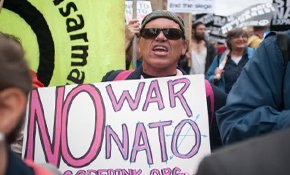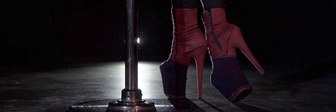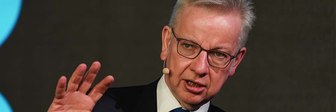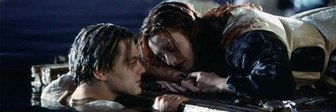John Humphrys asks, is NATO performing as it should?
When NATO leaders meet this week in Wales for their biennial summit they will face their biggest crisis since the end of the Cold War. The conflict in eastern Ukraine between Russian separatists and the government in Kiev is interpreted by many as being nothing less than a war waged by Russia against a country that wishes to be part of democratic Europe. Elsewhere NATO is seen as failing in tasks it has taken on or reluctant to intervene in places where European security in under threat. So is NATO still fit for purpose?
When the Soviet Union collapsed in the early 1990s many people believed that NATO’s role, as a collective security alliance to defend Western Europe from the threat posed by its neighbouring communist superpower, was over. With the Soviet Union gone there was nothing to defend against. But far from packing up, the organisation expanded both its membership and the scope of its activities.
First, it admitted as new members not only the countries of eastern Europe, including Poland and Hungary, among others, which had previously been part of the Soviet Union’s own collective alliance, the Warsaw Pact, but also countries that had belonged to the Soviet Union itself, the Baltic states of Estonia, Latvia and Lithuania. Then it extended the reach of its responsibilities to include conflict zones thought to threaten Europe’s security. So it found itself involved in Bosnia, in Kosovo and most recently in Afghanistan.
At the same time, however, the apparent disappearance of any threat from Russia, still the possessor of the nuclear armoury of the old Soviet Union, persuaded almost all NATO countries that they could reduce their defence expenditure. The implicit belief was that peace in Europe was secured but that NATO could go on playing a role in ‘out-of-area’ regions that might threaten that security.
Events in Ukraine this year have utterly changed that perspective. First, Russia used unacknowledged military force to take back from Ukraine the Crimean peninsula, an area of the country with a majority Russian population and that had previously been under Russian control for centuries. Then evidence mounted that it was providing massive support to ethnic Russian separatists in the east of Ukraine resisting efforts by the national government in Kiev to regain over the whole country. Not only has Russia supplied the separatists with advanced heavy weaponry (including tanks and the anti-aircraft weapons believed to have shot down Malaysia Airlines flight MH17), but it is now believed that Russia has at least a thousand Russian troops in the country, none of them wearing official uniform, so allowing Moscow to deny their presence.
To some NATO members what is going on could not be clearer. The Lithuanian President, Dalia Grybauskaite, said: “It is the fact that Russia is in a war state against Ukraine. … Practically Russia is in a state of war against Europe.”
The response of western countries has been one of outrage, not least because Ukraine is seen as a country keen to become a fully democratic part of the European family with ambitions to join both the EU and NATO. Because Ukraine has only a partnership arrangement with NATO rather than full membership there is no obligation on NATO to come to the country’s military defence, as there would be, under Article 5 of the NATO charter, if any member state were attacked. Instead, western countries are imposing increasingly stringent economic sanctions on Russia in order to try to force Russia to change course. There is little sign yet that they are succeeding.
What alarms many in the west is the subtle way in which Russia is waging its war, if war is what it is. Russia seems to be following the precepts of what has been called ‘hybrid war’, which relies hardly at all on the conventional pattern of uniformed soldiers marching into territory and much more on exerting political, economic and propaganda pressure on its target as well as engaging in cyber attacks and infiltrating equipment and illicit military personnel into the territory to help organise local allies.
Many believe President Putin is running rings round the west. He is also boosting his own popularity in Russia by what he is doing. His approval ratings soared recently to an unprecedented 87%.
So the crisis facing NATO leaders in Wales this week is not restricted to what is going on in Ukraine. The fear is that, emboldened by his successes there, Mr Putin might start to employ similar tactics from the handbook of ‘hybrid war’ to regain influence over areas of Europe lost to Russian influence with the collapse of the Soviet Union. Poland and the Baltic states are the NATO countries understandably most alarmed.
Back in March, the Polish prime minister, Donald Tusk, baldly called for 10,000 NATO troops to be stationed permanently in his country. Similarly the Estonian defence minister, Sven Mikser, has asked for ‘an allied presence on our soil as a way of reassurance and deterrence’.
So far NATO has resisted these calls. Some have argued that to make this move would be to break treaty agreements with Russia which proscribe ‘new permanent deployments’ by either side. Such an argument is scorned by those who point out that through its recent actions Russia is in breach of countless treaty obligations and international laws. Sir Malcolm Rifkind, the former foreign secretary, said: ‘NATO assets must be positioned in all NATO countries that require them.’
So far NATO has increased its military presence on the borders with Russia in the form of 600 US paratroopers in Poland and the Baltic States and Denmark, Britain and France have sent fighter jets to Poland and Estonia. This week NATO leaders are likely to agree to a new ‘high readiness brigade’ of about 4,000 which could be deployed to areas of tension within 48 hours.
Whether such measures will deter further Russian adventurism remains to be seen. But there is a more fundamental reason to doubt whether NATO really is in a position to deal with the new perceived threat from Moscow. For years the western military alliance has set itself the target for all twenty-eight member states that each should spend 2% of its GDP on defence spending. Currently, however, only four – the USA, Britain, Greece and Estonia – have honoured this pledge (and Britain looks likely to fall below the target in the coming years). Even more ominously, whereas during the cold war the USA shouldered 50% of NATO’s financial burden, it is now forking out for 75% of NATO’s costs.
Few people think this is sustainable, not least because of the growing isolationism of the American public following their searing experiences in Afghanistan and Iraq. President Obama has been criticised for supposedly failing to show a strong lead, not only over Ukraine but in the mounting crisis in Syria and Iraq, yet he is constrained by his own public opinion. So with America less and less willing to be the world’s policeman and with European countries seemingly unwilling to pay for their own security, the fundamental question facing NATO this week is whether it has the will to continue to protect Europe from the security threats its faces. Both President Putin and jihadis will be watching with interest.
Do you think NATO is still fit for purpose? And, if not, what do you think it needs to do to become so?









